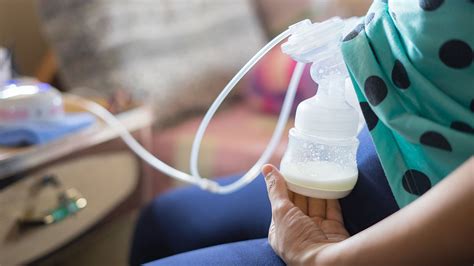Intro
Learn safe breast milk storage with 5 expert tips, covering refrigeration, freezing, and thawing, to preserve nutrients and safety, ensuring healthy feeding for babies, and easing mothers concerns about expression, storage, and handling.
Storing breast milk is a crucial aspect of breastfeeding, especially for working mothers or those who need to be away from their babies for extended periods. Proper storage and handling of breast milk can help maintain its nutritional value and safety for consumption. In this article, we will delve into the importance of storing breast milk, the benefits it provides, and the steps to follow for safe and effective storage.
Breast milk is a precious resource that offers numerous health benefits to babies, including optimal nutrition, immune system development, and protection against infections. However, expressing and storing breast milk can be a daunting task, especially for new mothers. With the right guidance and techniques, mothers can ensure that their breast milk is stored safely and remains nutritious for their babies. The ability to store breast milk also provides mothers with the freedom to return to work, travel, or simply have some time to themselves, knowing that their baby is being fed with the best possible nutrition.
The process of storing breast milk involves several steps, including expression, storage, and thawing. Each step requires careful attention to detail to maintain the quality and safety of the milk. Moreover, breast milk storage guidelines can vary depending on the storage method, whether it's at room temperature, in the refrigerator, or in the freezer. Understanding these guidelines is essential to ensure that the breast milk remains safe for consumption and retains its nutritional value.
Benefits of Storing Breast Milk

Key Considerations for Storing Breast Milk
Before diving into the storage process, it's essential to consider a few key factors, including: * Expression method: Breast milk can be expressed using a breast pump or by hand. * Storage containers: Breast milk can be stored in bottles, bags, or containers specifically designed for breast milk storage. * Labeling: It's crucial to label the stored breast milk with the date, time, and amount to ensure that the oldest milk is used first.Safe Storage Methods

Thawing and Warming Breast Milk
When it's time to use the stored breast milk, it's essential to follow the proper thawing and warming procedures to maintain the milk's safety and nutritional value. Some tips include: * Thawing: Frozen breast milk can be thawed overnight in the refrigerator or by running it under warm water. * Warming: Thawed breast milk can be warmed by running it under warm water or by placing it in a bowl of warm water.Best Practices for Handling Expressed Breast Milk

Common Challenges and Solutions
Despite the benefits of storing breast milk, many mothers face challenges, including: * Low milk supply: Increasing fluid intake, frequent pumping, and a healthy diet can help boost milk supply. * Storage space: Using a dedicated freezer or storing breast milk in a separate container can help manage storage space. * Thawing and warming: Following proper thawing and warming procedures can help maintain the milk's safety and nutritional value.Tips for Working Mothers

Overcoming Obstacles
Storing breast milk can come with its own set of challenges, including: * Limited storage space: Using a small freezer or storing breast milk in a separate container can help manage storage space. * Traveling: Using insulated coolers or frozen gel packs can help keep breast milk cool during travel. * Returning to work: Communicating with your employer and finding a supportive breastfeeding-friendly environment can help make the transition back to work smoother.Conclusion and Next Steps

We invite you to share your experiences, ask questions, or provide feedback on this article. Your input can help us create more informative and supportive content for breastfeeding mothers. Additionally, if you have any specific questions or concerns about storing breast milk, please don't hesitate to reach out to a lactation consultant or a healthcare professional for personalized guidance.
How long can I store breast milk in the freezer?
+Breast milk can be stored in the freezer for up to 6-12 months. However, it's essential to follow proper storage and labeling procedures to ensure the milk's safety and nutritional value.
Can I store breast milk in a regular freezer bag?
+No, it's not recommended to store breast milk in a regular freezer bag. Instead, use a dedicated breast milk storage bag or container that is designed to protect the milk from contamination and freezer burn.
How do I thaw frozen breast milk?
+Frozen breast milk can be thawed overnight in the refrigerator or by running it under warm water. Never thaw breast milk at room temperature or in hot water, as this can compromise the milk's safety and nutritional value.
Can I refreeze breast milk that has been thawed?
+No, it's not recommended to refreeze breast milk that has been thawed. Once breast milk has been thawed, it should be used within a few days and not refrozen, as this can compromise the milk's safety and nutritional value.
How often should I express and store breast milk?
+The frequency of expressing and storing breast milk depends on your individual needs and breastfeeding goals. Generally, it's recommended to express and store breast milk every 2-3 hours, or as needed, to maintain a consistent milk supply and prevent engorgement.
